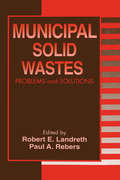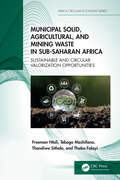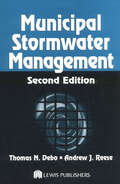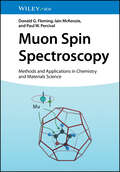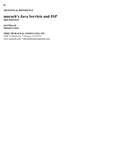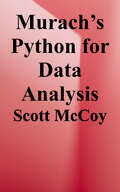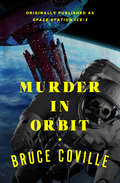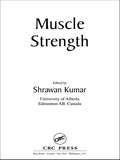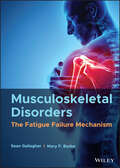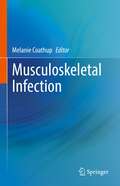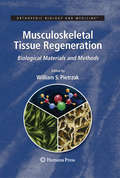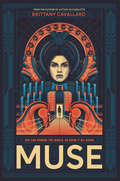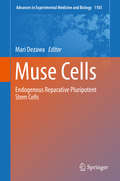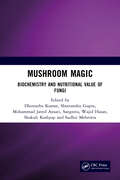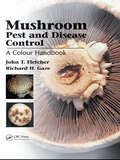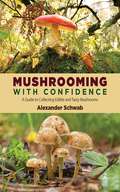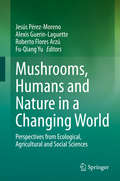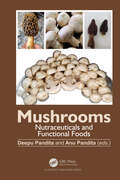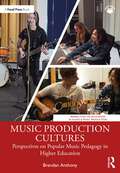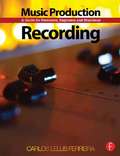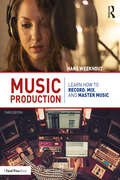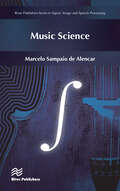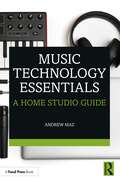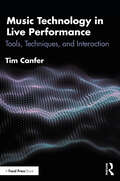- Table View
- List View
Municipal Solid Wastes: Problems and Solutions
by Robert E. Landreth Paul A. RebersEnvironmental scientists and engineers are faced with the challenge of how to manage increasing amounts of solid waste. Furthermore, waste management officials are constantly faced with the question "Which option is the most appropriate one in this situation, and how does it compare to other options?" For these individuals, and for the general public, Municipal Solid Wastes: Problems and Solutions helps to answer this and other questions by presenting the issues of waste handling and disposal-from general management concepts to specific techniques. Each topic is carefully reviewed: problems are presented, and possible solutions are discussed. Legislation that affects recycling and disposal is covered.
Municipal Solid, Agricultural, and Mining Waste in Sub-Saharan Africa: Sustainable and Circular Valorization Opportunities (Africa Circular Economy Series)
by Thandiwe Sithole Freeman Ntuli Tebogo Mashifana Thabo FalayiThe book seeks to cover the application of the principles of the circular economy within the context of the processing and waste management industry in sub-Saharan Africa. It includes topics related to the circular economy and the sustainable use of resources in the mining, process industry, and waste management sectors, and examines how some resources from these sectors, currently treated as “waste”, can be converted into secondary resources that can help drive economic development.Features: Describes fundamental environmental and process engineering principles to understand waste valorization technologies. Covers sustainable solid waste management and recovery of resources from solid waste from an African perspective. Provides guidelines for specific approaches to long-term sustainable waste management. Includes alternative waste treatment technologies in order of priority as per the waste hierarchy. Introduces pertinent industry-specific case studies, worked examples, and problems. This book is aimed at researchers and graduate students in environmental and chemical engineering and waste treatment.
Municipal Stormwater Management
by Thomas N. Debo Andrew ReeseDesigned to be a stand alone desktop reference for the Stormwater manager, designer, and planner, the bestselling Municipal Stormwater Management has been expanded and updated. Here is what's new in the second edition: New material on complying with the NPDES program for Phase II and in running a stormwater quality programThe latest information on
Muon Spin Spectroscopy: Methods and Applications in Chemistry and Materials Science
by Donald G. Fleming Iain McKenzie Paul W. PercivalMuon Spin Spectroscopy An introduction to muon spin spectroscopy with a focus on applications in chemistry and materials science Muon Spin Spectroscopy: Methods and Applications in Chemistry and Materials Science delivers a robust and practical discussion of the areas in muon spin spectroscopy most relevant to chemistry and materials science. In this text readers will find the background details of muonium chemistry, as well as descriptions of applications in a variety of topics of varying complexity, from chemical reactivity in the gas phase to condensed matter and biological systems. The text covers material ranging from the historical background to recent technological and theoretical developments in the field. Readers will also find: An introduction to muon beams and spin spectroscopy, including discussions of spin polarization and muon decayComprehensive explanations of the formation of chemical states incorporating muonsPractical discussions of chemical reactivity and dynamics testing rate theory in the gas phase, including the influence of the potential energy surfaceComprehensive treatments of muoniated free radicals, spin relaxation studies, and muonium chemistry and chemical kinetics in condensed phases Ideal for practicing spectroscopists, physical chemists, and surface chemists, Muon Spin Spectroscopy: Methods and Applications in Chemistry and Materials Science will also benefit students of materials science and chemistry.
Murach's Java Servlets and JSP
by Michael Urban Joel MurachThis new edition of Murach's Java Servlets and JSP makes it easier than ever for Java developers to master web programming. It shows how to install and use the Tomcat server and the NetBeans IDE. It shows how to use JSPs and servlets to build secure and well-structured web applications that implement the MVC pattern. It shows how to use sessions, cookies, JavaBeans, EL, JSTL, and custom tags. It shows how to use JDBC or JPA to work with a MySQL database. It shows how to work with JavaMail, SSL connections, authentication, encryption, filters, and listeners. It even includes an introduction to JSF to expand your perspective on Java web programming. These are the skills that you need to build professional Java web applications using servlets and JSP. A great read for any Java developer.
Murach's Python for Data Analysis
by Scott McCoyData is collected everywhere these days, in massive quantities. But data alone does not do you much good. That is why data analysis -- making sense of the data -- has become a must-have skill in the fields of business, science, and social science. But it is a tough skill to acquire. The concepts are challenging, and too many books and online tutorials treat only parts of the total skillset needed. <p><p>Now, though, this book draws all the essential skills together and presents them in a clear and example-packed way. So you will soon be applying your programming skills to complex data analysis problems, more easily than you ever thought possible. In terms of content, this book gets you started the right way by using Pandas for data analysis and Seaborn for data visualisation, with JupyterLab as your IDE. Then, it helps you master descriptive analysis by teaching you how to get, clean, prepare, and analyse data, including time-series data. Next, it gets you started with predictive analysis by showing you how to use linear regression models to predict unknown and future values. And to tie everything together, it gives you 4 real-world case studies that show you how to apply your new skills to political, environmental, social, and sports analysis. <p><p>At the end, you will have a solid set of the professional skills that can lead to all sorts of new career opportunities. Sound too good to be true? Download a sample chapter for free from the Murach website and see for yourself how this book can turn you into the data analyst that companies are looking for.
Murder in Orbit
by Bruce CovilleA young scientist discovers a zero-gravity homicide onboard a space station Rusty McPhee was born on Earth, but he hasn't been on solid ground for so long that he hardly remembers what it's like. He was raised on the space station known as ICE-3, and he knows the ins and outs of this floating research platform better than anybody. He's working in the waste disposal unit, watching garbage dissolve and be recycled, when he sees something terrifying: a dead body, half decomposed, face down in the muck. Before he can tell anyone what he's found, the machines finish processing the body, and he's left without any evidence that a murder ever happened. Not one of ICE-3's twenty-five thousand inhabitants is missing--so where did the body come from? As he tracks the zero-G killer, danger lurks around every airlock, and it will take just one misstep for Rusty to fall from the sky. This ebook features an illustrated personal history of Bruce Coville including rare images from the author's collection.
Muscle Strength
by Shrawan KumarMuscle strength is an important topic for ergonomics practitioners and physiologists to understand, especially as it relates to workplace injuries. Muscle strength and function is at the heart of many injuries that lead to reduced productivity and economic strain on the worker, the company, and society as a whole.This comprehensive source o
Musculoskeletal Disorders: The Fatigue Failure Mechanism
by Sean Gallagher Mary F. BarbeMusculoskeletal Disorders Hands-on guidance and tools for the prevention of musculoskeletal injuries in the workplace In Musculoskeletal Disorders: The Fatigue Failure Mechanism, a team of accomplished occupational health experts delivers an essential and incisive discussion of how musculoskeletal disorders (MSDs) develop and progress, as well as how they can be prevented and controlled. Offering a novel, evidence-based approach to this costly problem, the book has broad implications for employers, insurers, and other stakeholders in workplace health and safety. The authors identify new risk assessment approaches based on the cumulative effects of exposure to highly variable loading conditions. These new approaches can also be applied to evaluate the efficacy of job rotation scenarios and to quantify exoskeleton efficacy. The complexities associated with fatigue failure in biological environments are also explored in addition to suggested models for understanding how the body maintains musculoskeletal homeostasis. Readers will also find: Thorough introductions to the material properties of musculoskeletal tissues and the fundamental principles of fatigue failure analysis In-depth explorations of the structure and function of the musculoskeletal system and up-to-date epidemiological research on MSDs Comprehensive discussions of validated fatigue failure risk assessment methods, including continuous exposure assessment to better quantify injury risk Insightful treatments of remodeling and healing processes as they apply to MSD risk, as well as factors that impair the healing process, like stress, obesity, and aging Perfect for occupational and environmental health and safety (OEHS) professionals, Musculoskeletal Disorders: The Fatigue Failure Mechanism will also earn a place in the libraries of ergonomists, physical therapists, biomechanists, industrial hygienists, occupational physicians, orthopedists, and musculoskeletal disorder researchers.
Musculoskeletal Infection
by Melanie CoathupThis book gathers international knowledge and contemporary clinical and scientific evidence on infections associated with the musculoskeletal system at a time when we are confronted with significant challenges and uncertainty. A key focus of the book is enhancing and advancing future discovery in the detection, prevention and treatment of musculoskeletal infection. This is an ideal book for physicians, surgeons, research scientists, university students, as well as medical and allied health students.
Musculoskeletal Tissue Regeneration
by William S. Pietrzak C. A. VacantiThe repair of musculoskeletal tissue is a vital concern of all surgical specialties, orthopedics and related disciplines. Written by recognized experts, this book aims to provide both basic and advanced knowledge of the newer methodologies being developed and introduced to the clinical arena. A valuable resource for researchers, developers, and clinicians, the book presents a foundation to propel the technology and integration of the current state of knowledge into the 21st century.
Muse
by Brittany CavallaroAmerican Royals meets The Winner’s Curse in the first book of a dazzling duology from New York Times bestselling author Brittany Cavallaro about revolution, love, and friendship in a reimagined American monarchy. The year is 1893, and war is brewing in the First American Kingdom. But Claire Emerson has a bigger problem. Claire’s father is a sought-after inventor, but he believes his genius is a gift granted to him by his daughter’s touch, so he keeps Claire under his control.As their province prepares for war, Claire plans to escape, even as her best friend, Beatrix, tries to convince her to stay and help with the growing resistance movement that wants to see a woman on the throne. When her father’s weapon fails to fire on the World’s Fair’s opening day, Claire is taken captive by Governor Remy Duchamp, St. Cloud’s young, untried ruler. Remy believes that Claire’s touch bestows graces he’s never had, and with political rivals planning his demise, Claire might be his only ally.The last thing that Claire has ever wanted is to be someone else’s muse, but she finally has a choice: Will she quietly remake her world from the shadows—or bring it down in flames?
Muse Cells: Endogenous Reparative Pluripotent Stem Cells (Advances in Experimental Medicine and Biology #1103)
by Mari DezawaThis book provides the first comprehensive account of multilineage-differentiating stress-enduring (Muse) cells, a pluripotent and non-tumorigenic subpopulation of mesenchymal stem cells (MSCs) that have the ability to detect damage signals, migrate to damaged sites, and spontaneously differentiate into cells compatible with the affected tissue, thereby enabling repair of all tissue types. The coverage encompasses everything from the basic properties of Muse cells to their tissue repair effects and potential clinical applications—for example, in acute myocardial infarction, stroke, skin injuries and ulcers, renal failure, and liver disease. An important technical chapter provides a practical and precise protocol for the isolation of Muse cells, which will enable readers to use Muse cells in their own research. In offering fascinating insights into the strategic organization of the body’s reparative function and explaining how full utilization of Muse cells may significantly enhance the effectiveness of MSC treatment, the book will be of high value for Ph.D. students, postdocs, basic researchers, clinical doctors, and industrial developers.
Museum Informatics: People, Information, and Technology in Museums (Routledge Studies in Library and Information Science #Vol. 2)
by Paul F. Marty Katherine Burton JonesMuseum Informatics explores the sociotechnical issues that arise when people, information, and technology interact in museums. It is designed specifically to address the many challenges faced by museums, museum professionals, and museum visitors in the information society. It examines not only applications of new technologies in museums, but how advances in information science and technology have changed the very nature of museums, both what it is to work in one, and what it is to visit one. To explore these issues, Museum Informatics offers a selection of contributed chapters, written by leading museum researchers and practitioners, each covering significant themes or concepts fundamental to the study of museum informatics and providing practical examples and detailed case studies useful for museum researchers and professionals. In this way, Museum Informatics offers a fresh perspective on the sociotechnical interactions that occur between people, information, and technology in museums, presented in a format accessible to multiple audiences, including researchers, students, museum professionals, and museum visitors.
Mushroom Magic: Biochemistry and Nutritional Value of Fungi
by Dhirendra Kumar Mohammad Javed Ansari Sheetanshu Gupta Wajid Hasan Shakuli Kashyap Sudhir MehrotraThis book presents a detailed account of mushroom biology. It covers the biochemical composition, nutritional significance, and health benefits of mushrooms. It also discusses their medicinal properties, biochemical variability, and culinary techniques for maximizing their nutritional value.The subject matter in this book also discusses: Impact of Cooking and Processing on Mushroom Nutrient Retention Vitamins and Minerals in Mushrooms: A Nutritional Treasure Chitin and Chitosan in Mushrooms: Bioactivity and Applications Allergenic and Toxic Compounds in Mushrooms: Biochemical Identification and Implications Edible and Wild Medicinal Mushrooms: Comparative Biochemical Profiles Print edition not for sale in South Asia (India, Sri Lanka, Nepal, Bangladesh, Pakistan or Bhutan)
Mushroom Pest and Disease Control: A Colour Handbook
by John T. Fletcher Richard H. GazeThe production of Agaricus bisporus is a major, world-wide, highly mechanized process. Healthy crops are essential if yields, quality and profitability are to be maintained. Pests and diseases are a major cause of crop losses and this book covers their recognition, biology and control. New pests and diseases are described together with changes in t
Mushrooming with Confidence: A Guide to Collecting Edible and Tasty Mushrooms
by Alexander SchwabPicking mushrooms in the woods on a sunny day can be fun for the whole family . . . but only if you do it safely! There are thousands of different species of fungi, so it can be hard to tell which are edible and which are poisonous when you are picking them for yourself in the wild. Safe and unsafe species often closely resemble each other, and worrying about which mushrooms are safe and which might be deadly can take all the fun out of mushrooming. Enter Mushrooming with Confidence! Improving on the usual overwhelming and exhaustive wild plant guidebook, Mushrooming with Confidence is a slim, handy manual that focuses on the tastiest and most common mushrooms, so that you can easily spot those that are not only safe to eat, but also a delight to cook and share! Here mushrooms are divided into four identification categories so that anyone will be able to recognize what he or she is looking at quickly and correctly. Thirty of the most common and delicious types are explained in detail, from the common field mushroom to the pretty purple amethyst deceiver and the prolific and tasty charcoal burner. Each mushroom includes a “Positive ID Checklist” that the reader can go through to be absolutely certain they have the right species, and more than 300 color photographs make it a snap to know exactly what kind of mushroom you’ve found . . . and whether you really want to pick it! With lists of the best tools for mushrooming, the best techniques for getting a mushroom out of the ground in one piece, and even how to remove worms, Mushrooming with Confidence will extinguish any fear or doubt that might stop you from hunting down your own delicious mushrooms. This will prove a fun and essential guide for novice and experienced pickers alike!
Mushrooms, Humans and Nature in a Changing World: Perspectives from Ecological, Agricultural and Social Sciences
by Jesús Pérez-Moreno Alexis Guerin-Laguette Roberto Flores Arzú Fu-Qiang YuThis book focuses on recent advances in our understanding of wild edible mycorrhizal fungi, truffle and mushrooms and their cultivation. In addition to providing fresh insights into various topics, e.g. taxonomy, ecology, cultivation and environmental impact, it also demonstrates the clear but fragile link between wild edible mushrooms and human societies. Comprising 17 chapters written by 41 experts from 13 countries on four continents, it enables readers to grasp the importance of protecting this unique, invaluable, renewable resource in the context of climate change and unprecedented biodiversity loss. The book inspires professionals and encourages young researchers to enter this field to develop the sustainable use of wild edible mushrooms using modern tools and approaches. It also highlights the importance of protecting forested environments, saving species from extinction and generating a significant income for local populations, while keeping alive and renewing the link between humans and wild edible mushrooms so that in the future, the sustainable farming and use of edible mycorrhizal mushrooms will play a predominant role in the management and preservation of forested lands.
Mushrooms: Nutraceuticals and Functional Foods
by Deepu Pandita Anu PanditaThere are around 1.5 million fungal species worldwide. Out of these around 14,000 species produce fruiting bodies known as mushrooms, and around 2000 species are edible, and only 270 are reported to be medicinal. The fungal kingdom is phylogenetically closer to humans than plants, so gives better health benefits to human systems. This book educates readers on the nutritional, pharmaceutical and medicinal values of different mushrooms and their utilization as nutraceuticals and functional foods for human security. It reviews the current knowledge on the distribution of edible mushrooms, its general characteristics, morphology, nutritional profile and properties, pharmacological importance, and biological activities. Health benefits of mushrooms, antioxidant and secondary metabolite profiling, major biological activities of mushroom-derived secondary metabolites, functional foods based on the mushrooms open doors for therapies, products with added value, toxicology, and side effects if any are also highlighted. The book is intended for a large and varied audience – researchers, scientists, and scholars in academia, mushroom growers and industries, nutritionists, dietitians, food scientists, clinicians, doctors, drug industries, pharmacy, biotechnologists, biochemists, botanists, mycologists, and general masses.
Music Production Cultures: Perspectives on Popular Music Pedagogy in Higher Education (Perspectives on Education in Audio & Music Production)
by Brendan AnthonyMusic Production Cultures draws on interviews with international educators, surveys completed by students of music production from around the globe, doctoral research findings and contextualised career experiences from the author as a celebrated music producer to explore how effective learning environments can be created for popular music production in higher education. Acknowledging the musical, technological and social diversity in global popular music production practice, this book highlights the integral elements that educators and their institutions must consider in order to provide high-quality and relevant education for the students of today and into the future. Offering concepts, approaches and practices to be integrated into diverse music production pedagogical frameworks in higher education, this book considers the pedagogical approaches and goals that bridge music production education to the industry, using examples and insights from international educators throughout as well as lesson plan examples for instructors. Music Production Cultures develops a foundation of practice to inform teachers designing equitable, diverse and inclusive pedagogies that are dependent on the musical, cultural and social influences of their students. This is an invaluable resource for educators and researchers in the area of audio education looking to develop their pedagogical strategies.
Music Production: A Guide for Producers, Engineers, and Musicians
by Carlos LellisYour recording can make or break a record, and a clean recording is an essential catalyst for a record deal. Professional engineers with exceptional skills can earn vast amounts of money be in demand from the biggest acts. To develop such skills you need to master both the art and science of recording. Rehearsal to Monitor Mix gives you all you need to know, the tools and techniques, to put into practice and improve your recording. Covering the entire process from fundamental concepts to advanced techniques and offering a multitude of tips and tricks and audio samples, this book has it all.Carlos Lellis teaches you , how to craft and evaluate your recording then take it a step further. He describes the theory and the tools used how these are put into practice and then shows you how they are put together. Using audio and visual materials and field observations to aid with explanationsPacked full of photos, graphs, diagrams and audio samples, Rehearsal to Monitor Mix is a vital read for anyone wanting to succeed in the field of recording
Music Production: Learn How to Record, Mix, and Master Music
by Hans WeekhoutWe’re all able to record music; a smartphone will get you quick results. But for a good sound, a lot more is involved. Acoustics, microphone placement, and effects have a huge influence on the resulting sound. Music Production: Learn How to Record, Mix, and Master Music will teach you how to record, mix, and master music. With accessible language for both beginner and advanced readers, the book contains countless illustrations, includes tips and tricks for all the popular digital audio workstations and provides coverage of common plugins and processors. Also included is a section dedicated to mastering in a home studio. With hundreds of tips and techniques for both the starting and advanced music producer, this is your must-have guide.
Music Science (River Publishers Series In Signal, Image And Speech Processing Ser.)
by Marcelo Sampaio AlencarThe book presents the fundamentals of music science, followed by a discussion on the historical evolution of music. An introduction to the analysis of signals in time and frequency is presented, which includes sound and noise. Features and mathematical aspects of the sound are discussed, including vibration and timbre.The book presents a review of existing voice models and discusses the voice production, sound perception, music characteristics and acoustics, tempo, rhythm and harmony. Musical theory is presented, including staff, notes, alterations, keys and intervals, tones and associated frequencies and wavelengths. The creation of major and minor scales is emphasized, along with a study on consonance and dissonance, measure, metric, tempo markings, dynamics, modulation. The book also explains the chord formation, and discusses melody and composition.The book has four appendices, including an appendix on the basic differentiation and integration theorems, another with useful Fourier tables, and an appendix featuring the notes, their frequencies and wavelengths. The book also has a glossary of music terms.
Music Technology Essentials: A Home Studio Guide
by Andrew MazMusic Technology Essentials provides an overview of the vocabulary, techniques, concepts, and devices used in contemporary music production and guides readers through the essential fundamentals of music technology so that they can create their own music productions at home. This highly accessible book covers sound fundamentals and theory, as well as practical topics like hardware, software, MIDI, digital audio, synthesis, computer notation, and audio-visual applications, to equip the reader with the principles they need to achieve professional-sounding results. Each chapter is accompanied by real-life examples and exercises that can be applied to any digital audio workstation software, to put the lessons into practice. This book will also help readers evaluate their requirements for home music production while working within a sensible budget. Music Technology Essentials is the ideal textbook for beginners inside and outside of the classroom, including those on music and music production courses, who wish to enter the world of music technology but are unsure where to start or what to purchase.
Music Technology in Live Performance: Tools, Techniques, and Interaction
by Tim CanferMusic Technology in Live Performance explores techniques to augment live musical performance and represents a comprehensive guide to best practices in music technology for live performance. This book presents a practical and accessible introduction to the theories of liveness and an array of live performance technologies and techniques. Areas covered include analogue and digital audio, live sound, the recording studio, and electronic music, revealing best professional practices and expert tips, alongside an exploration of approaches to increasing the exchange of energy in live performance. Music Technology in Live Performance is an ideal introduction for students of music performance, music production, and music technology, and a vital resource for professional musicians, producers, and technology developers.
